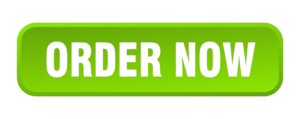My order:
1- No theft, no match please.
2-You can find the instructions inside the document
3- Please write a paper in the document
4- Write a report on whatever you use to research and what you write in a different document because we will discuss it separately in class
Write at least 6 references using the APA style.
NB:
Please use simple language
Put the in-text quote in each.
Additions within the document.
In our study of contract terminology, we learn about valid and invalid contracts. discuss؟
.؟5.2 Action Required:
A “decision” tree is a graph of a decision and its possible consequences. It is used to create a plan to reach the goal.
5.3 Test your knowledge (question):
What are the advantages and limitations of using a decision tree؟
Videos:
Watch the following video and answer the question below.
5.3 Test your knowledge (question):
Q1 Using the concept of resilience, explain with the help of an example why a protective crop is bad news for farmers?
.Video Case Study
From Startup to Success
Think & Discuss
Direct-to-consumer retail companies have become all the rage, with companies like Warby Parker (eyeglasses), Harry’s (razors), Glossier (makeup), and Casper (mattresses) all disrupting established industries. These companies have used e-commerce to bypass traditional retail sales channels, allowing consumers to purchase high-quality goods for extremely low prices. Luggage manufacturer Away is poised to become the next prominent example of direct-to-consumer e-commerce.
Away manufacturers carry-on luggage in China and sells it online. Away’s founders, Jen Rubio and Stephanie Korey, both previously worked at Warby Parker; Korey also spent time at Casper. The two sought to use their experience at these companies to create a luggage brand in the same vein that would excite consumers and inspire loyalty. Both felt that the existing luggage marketplace, expected to be as large as $34 billion by 2020, was not doing enough to serve their customers, creating an opportunity for Away. Away’s flagship carry-on costs $225, far less than the $525 price tag of a similar model from Tumi, a high-end brand owned by industry leader Samsonite. The carry-on features a hard polycarbonate shell with 360-degree spinning wheels, high-quality YKK zippers, a compression pad to help squeeze in extra items, and even a removable lithium-ion battery for charging phones. The low price point for such a high-quality item is only achievable because of the company’s direct-to consumer model, allowing Away to avoid splitting revenues with department stores and other middlemen.
Away is on track to earn $150 million in revenue in 2018, and the company is already
profitable, often a rarity among start-up companies. Away has raised $81 million in venture capital to date and its latest funding was secured at a valuation of $700 million, bringing Away very close to the coveted $1 billion “unicorn” milestone. The company has 200 employees and expects to add over 200 more jobs in the next five years. Away has also opened several brick-and-mortar stores in major metropolitan markets, such as New York, Los Angeles, San Francisco, and Austin, with plans to open more overseas in London, Berlin, Paris, Milan, and Copenhagen. To date, the company has sold over 500,000 suitcases. Away’s revenue and sales statistics are impressive for a relatively new company, and investors have taken note. Away has found that establishing physical stores in high-traffic locations improves online sales in those markets, just as it has for Warby Parker and other similar directto-consumer brands. Away is also very active on social media channels, including Instagram, where the company has hundreds of influencers that market the product. Away has also launched several innovative marketing campaigns, including a pop-up hotel in Paris, a travel magazine, and a podcast, all of which furthers the company’s goal of creating exciting travel experiences for its customers.
Video Case Questions:
What event inspired the founders of Away to create their company?
How did Away’s founders determine whether or not there was a market for the company they hoped to build?
What is the objective of Away’s customer experience team?
Does Away see itself as purely a luggage company?
How does CEO Korey’s attitude towards expertise differ from that of other CEOs, in her own words?
Test your knowledge
Q1: What types of business models does eBay use?
B2B only
B2C only
B2B and B2C
None of the above
Q2: Facebook is an example of:
A: Community provider
B: Market creator
D: Service provider
C: Content provider
Q3: What distinguishes an e-commerce business plan from a traditional business plan? (Essay question)
Answer the essay question in the discussion board, your answer needs not to exceed 100 words


Leave a Reply